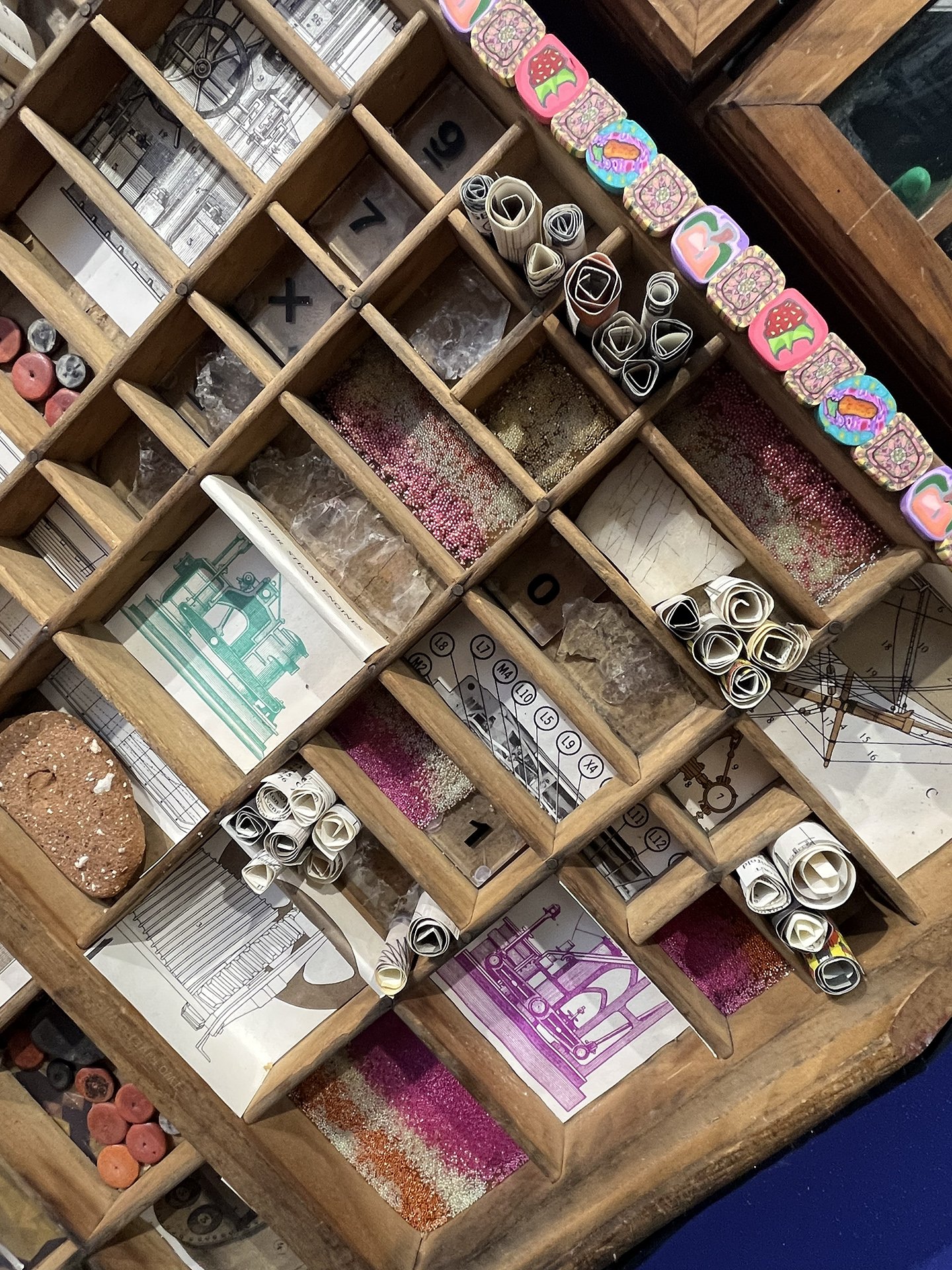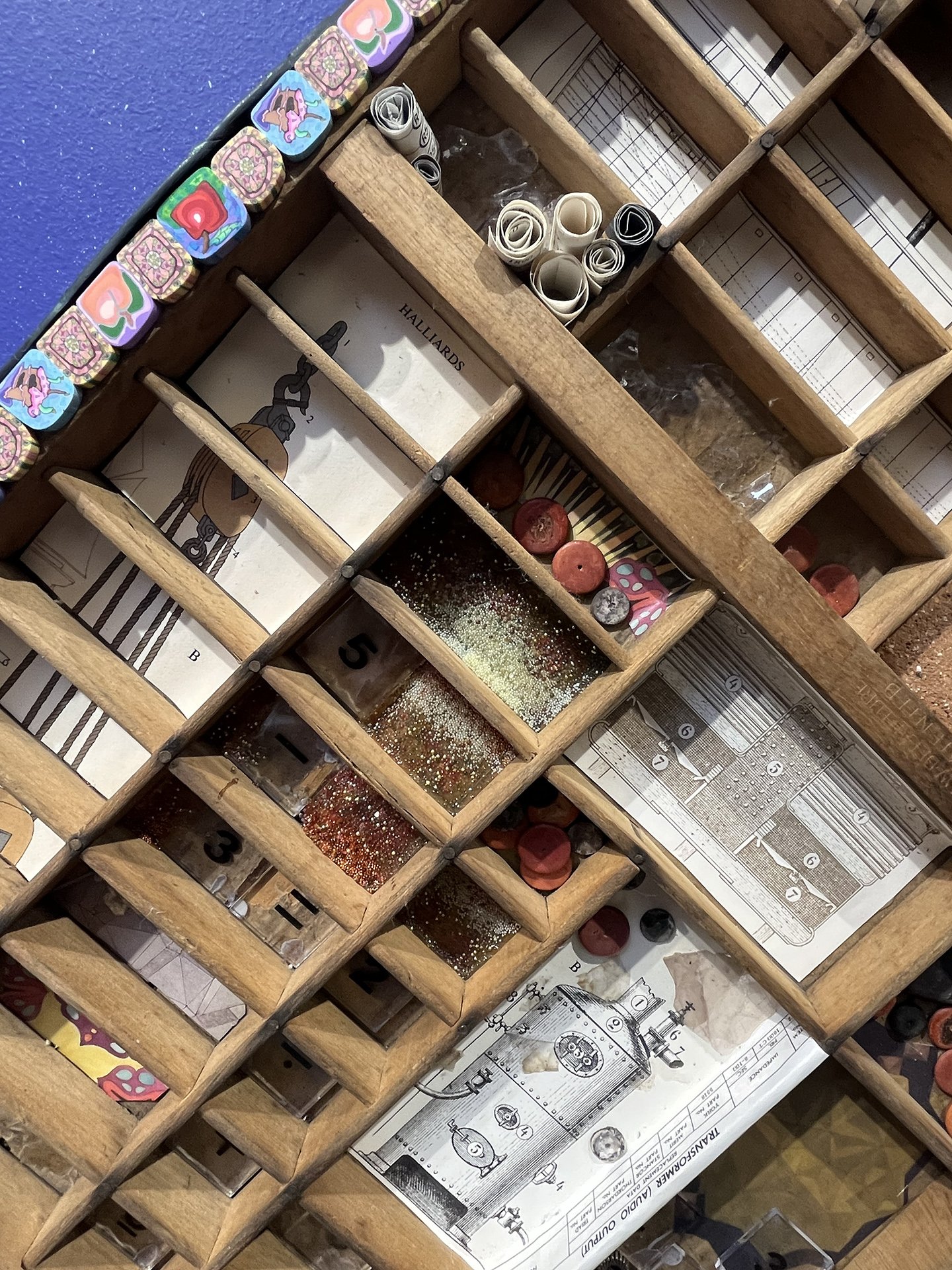When I thought of the idea of making a sculpture of a beaver I really had no idea what amazing creatures they are! I just knew that they were second to humans in changing the environments that they live in. I did not know that they are a keystone species or even what that meant. But as I started drawing beavers and coming upon articles on the web about them I was soon smitten!
Beavers are monogamous and they live in their lodges with their newborns and one year old kits. They have two underwater openings that can’t be seen from above the water.
One of the first things I learned about beavers is that their dams work as air conditioners for the forest. I was excited to read this because I had just recently found a piece of a fan while walking down the alley near my house. This was the first part of the beaver I created: a fan with fans on it for the beaver back.
The next section I worked on was the “e”. After a few more videos learning about beavers I wanted to make the point about their engineering skills. I found some old books and magazines that had equations and digital maps and a book about ships that had great imagery that evoked the idea of engineering to collage on the letter e.
The more I learned about beavers the more they seemed to just pop up. I even heard a podcast randomly in my feed about how beavers were relocated by parachute after the second World War . Then my friend Laura Burlis (also a polymer clay artist) gave me the book “Eager, The surprising, secret lives of Beavers and why they Matter” by Ben Goldfarb. And after that I had soooo many ideas to pack into this piece. The following is an explanation of many of the “hidden” facts in my “Eager Eco Engineer":
Canadian Maple Leaf Shelf: The beaver is the national symbol of Canada (it’s hard to see but it’s near the parachuting beaver).
Back Foot: Diorama of animals. I wanted to show the connection this small rodent has to larger animals of the forest. They rely on beaver ponds for their water source, cooling the forest , habitat for their food source of fish and more.
Near Hind Leg: Beaver Deceiver- In “Eager “ Goldfarb talks about this device which can be used to lower the levels of beaver ponds so they don’t flood roads and other human property. It’s basically a caged tube that runs from the middle of the pond to the other side of the dam. It’s been very controversial but over the years it’s proven to be much cheaper than just trying to get ride of troublesome beavers.
Tail- I made most of the tail from a letter press drawer and a house shaped collection shelf. The tail of a beaver serves as storage for the winter, a warning system (when slapped on the water) and a rudder as they swim. Check out all the ways I symbolized these ideas (and other beaver facts) in the tail.
Tip of the Tail: Core samples. As I read about how they studied samples of the earth to see how the sentiment had changed as the beaver population changed I got the visual idea of creating my own core samples.
Neck- Bicycle turned into a pie chart. When I discovered this old fashioned bike made of metal worked perfectly for the beaver’s neck I had the idea of putting a pie chart in the wheels but I wasn’t sure what it would be a pie chart for. Once I started reading more about the fur trade and how beavers were harvested more than any other animal I decided to make a chart to show this. Wow was it a challenge to find stats to create this chart. I read so many articles about the fur trade but to find stats on exactly how many furs were collected of each animal it really took some digging. I finally found this research paper that was full of bar graphs for each animal that was part of the fur trade from 1600 to 1984. I picked 1790 because this was the peak year for beaver harvesting and made my own chart (keep in mind it’s made by an artist so it might not be factually exact!) It is very interesting to see how much people were harvesting furs even in the 1980’s! I’d be interested to see these same stats to 2023.
There is so much more to be learned about these incredible creatures and their role as keystone species. I hope this work of art sparks your interest and gives you an idea of the importance of these rodents to our eco system and to us!
At the right angle you can see his "tooth”. Beaver teeth grow continuously so they have to keep on chewing on wood. Their teeth have a lot of iron in them so they are orange (mine is kind of reddish orange because of the piece of found metal I used).
Here’s the whole piece! It’s over five feet tall!











